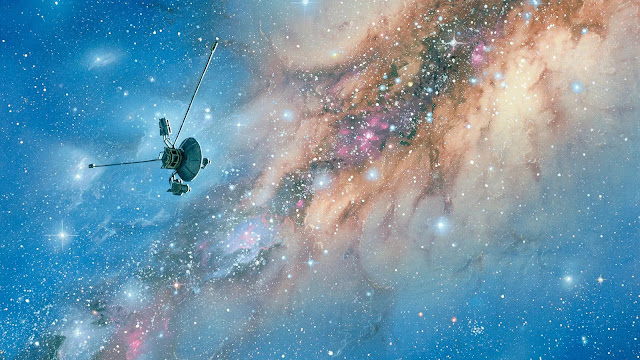Exploring the Depths of the Cosmos: A Journey Through the Universe
The cosmos, also known as the universe, is a vast and mysterious place that has captivated the imagination of mankind for centuries. From the stars in the sky to the galaxies beyond, the universe is a seemingly endless expanse of space and time. In this blog post, we'll take a closer look at the wonders of the cosmos and explore some of the most fascinating aspects of the universe.
- The Big Bang Theory: The Big Bang Theory is the leading explanation for the origin of the universe. It states that the universe began as a hot and dense singularity that expanded rapidly, eventually cooling and forming the galaxies and stars we see today.
- The Expanding Universe: The universe is not only thought to have begun with the Big Bang, but it is also thought to be still expanding. This is supported by the observation of the redshift of light from distant galaxies, which indicates that they are moving away from us.
- Dark Matter and Dark Energy: While visible matter makes up only a small portion of the universe, scientists believe that the majority of the universe is composed of dark matter and dark energy. These mysterious forms of matter and energy do not interact with light, making them invisible to telescopes, but their presence can be inferred through the gravitational effects they have on visible matter.
- The Solar System: Our solar system is made up of the sun and all the celestial bodies that orbit around it, including the eight planets and their moons, as well as asteroids, comets, and other small bodies.
- The Milky Way Galaxy: The Milky Way is the galaxy that contains our solar system. It is a spiral galaxy, with a central bar and four main spiral arms. It is estimated to contain around 100 billion stars and is thought to be around 13.2 billion years old.
The Other Galaxies: Beyond our own galaxy, there are countless other galaxies in the universe, each with their own unique characteristics. Some are spiral like the Milky Way, while others are elliptical or irregular in shape. Some are relatively close tous, while others are millions of light-years away. These distant galaxies offer a glimpse into the vastness and diversity of the universe, and provide a never-ending source of inspiration and wonder for scientists and stargazers alike.
- The Future of the Cosmos: Scientists believe that the universe will continue to expand for an infinite amount of time, eventually leading to the heat death of the universe. However, theories like the Big Crunch, where the universe will collapse back into a singularity, and the Big Rip, where the universe will rip apart due to dark energy, are also being proposed.
- The Search for Life: One of the most intriguing questions of the cosmos is whether or not there is other life in the universe. The discovery of exoplanets, planets outside of our solar system, has reignited the search for extraterrestrial life. With the advancements in technology and space exploration, scientists are optimistic that we may one day discover evidence of life beyond Earth.
The cosmos is an endlessly fascinating and mysterious place, with new discoveries and theories being proposed all the time. From the Big Bang to the search for extraterrestrial life, the universe continues to offer a never-ending source of inspiration and wonder.









No comments